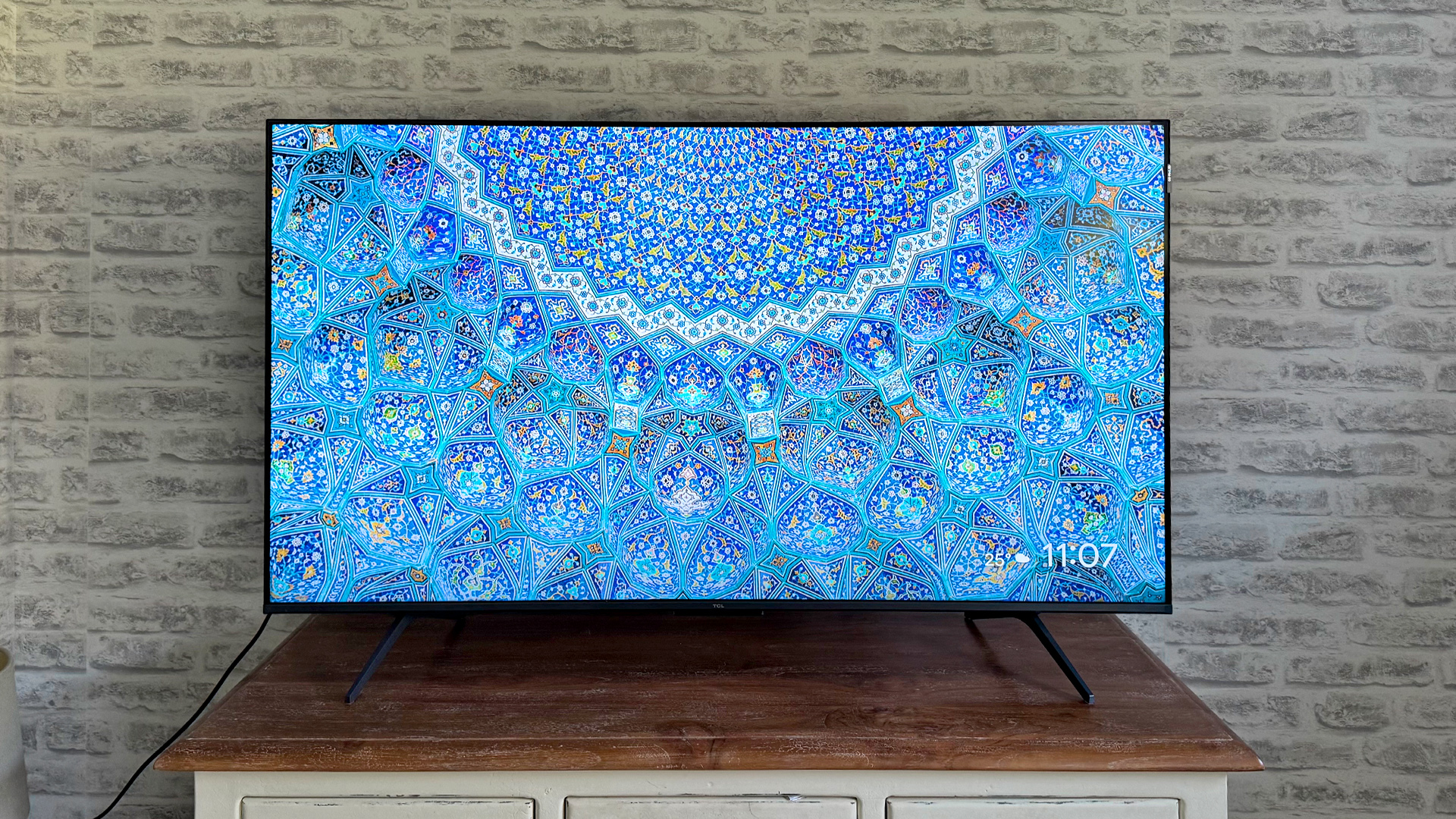What Hi-Fi? Verdict
Panasonic’s excellent OLED form continues - the HZ1000 is a brilliant, premium TV
Pros
- +
Beautifully balanced images
- +
Impressive handling of motion
- +
Crisp, clear sound
Cons
- -
Missing next-gen HDMI features
- -
Lacks an ideal Dolby Vision preset
- -
Pricier than rivals
Why you can trust What Hi-Fi?
Panasonic TVs rather fly under the radar these days. If LG and Samsung are the cool kids in class, and Philips is the slightly weird extrovert who wears colourful trousers and just about gets away with it, Panasonic is the geeky kid in the corner who doesn’t really talk to anyone but quietly gets on with his work.
A Panasonic TV isn’t flashy or super-stylish. It doesn’t have a ring of lights around it and it doesn’t turn into a picture frame when you’re not watching it. It just quietly goes about the business of producing the best picture possible - and isn’t that what you really want from your TV?
The TX-55HZ1000B is the first model we’ve tested from the company’s 2020 OLED range, and we’ve got very high hopes for it – not least because the very best OLED TV we tested in 2019 was a Panasonic. Can this new model follow that same form?
Pricing
The Panasonic TX-55HZ1000B is currently priced at £1899. It actually launched at £1999, so has already had a bit of a discount.
It’s still more expensive than all of its obvious rivals, though: the Philips 55OLED805, LG OLED55CX, Samsung QE55Q90T and even the Sony KD-55A8 are all currently available for less.
If you’re after a bigger TV, the HZ1000 is also available as a 65in model. That's the TX-65HZ1000B, and it will currently set you back £2699.
Panasonic doesn’t currently sell TVs in the US, and the HZ series is yet to arrive in Australia.
The latest hi-fi, home cinema and tech news, reviews, buying advice and deals, direct to your inbox.
Design
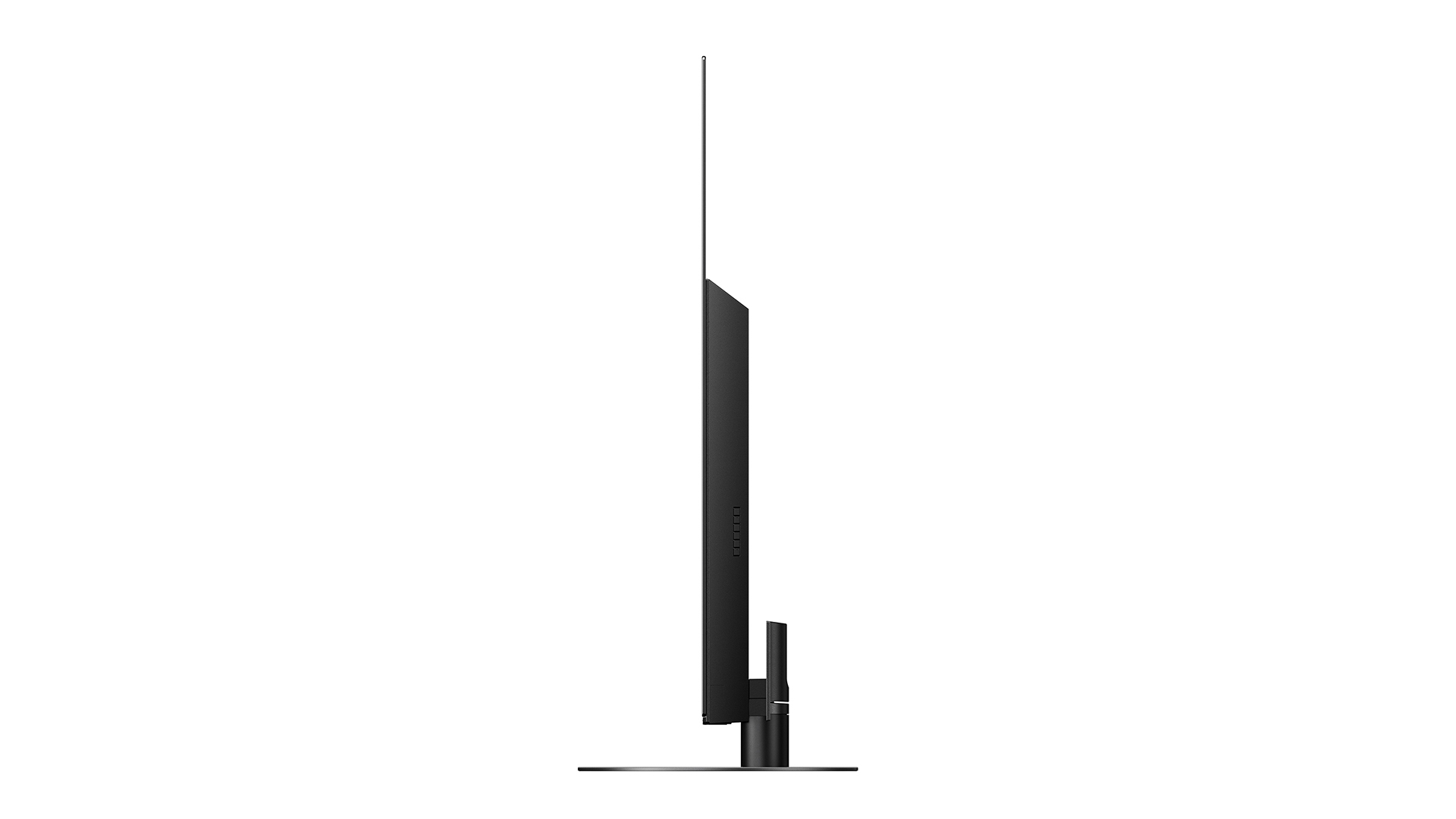
From the front, there’s generally little to differentiate one OLED from another, particularly with the stand or feet detached, but Panasonic does buck the trend for debadging by including the company name on a strip below the bottom bezel.
The stand is unusual, too, in that it swivels and has a footprint that’s just 39cm wide. That makes it that bit easier to find a position in the room for it and a piece of furniture for it to stand upon. By comparison, the Philips 55OLED805’s feet give it an 80cm-wide footprint, while the LG CX’s pedestal is more than 90cm wide. The Panasonic’s pedestal also combines a low profile with a fairly tall neck, so it is more accepting of a soundbar than many rivals.
As this is an OLED, the panel section is awesomely thin; but grafted to the back of it is an enclosure that houses all of the set’s processing hardware, connections and speakers. Pretty much every OLED takes this approach (the exceptions are LG’s extremely high end ‘Wallpaper’ and ‘Rollable’ models) but, by covering almost two thirds of the set’s rear and taking the overall depth measurement to 5.8cm, the Panasonic’s is bigger than most.
For reference, the Philips OLED805 is also 5.8cm deep, the Sony A8 is 5.2cm and the LG CX 4.7cm. Perhaps surprisingly, Samsung’s Q90T QLED trumps all of these OLEDs by being just 3.5cm thick, but then that TV is that deep all over - there are no super-slim sections as there are with its OLED rivals.
Features
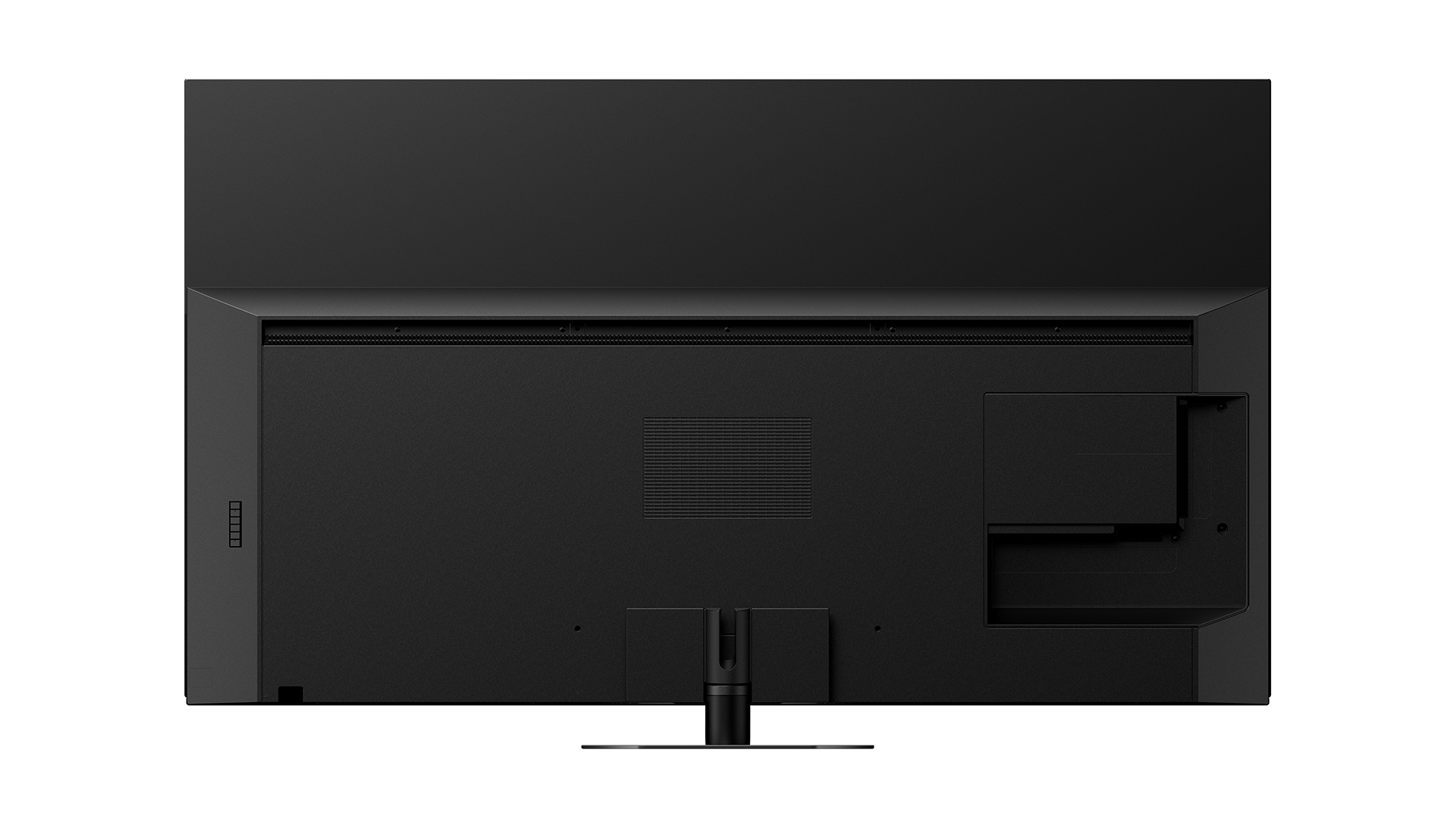
While the HZ1000 has the same HCX Pro Intelligent Processor as last year’s GZ950 and GZ2000, it also has the latest version of LG’s OLED panel and Panasonic’s new Smooth Motion Drive Pro.
Panasonic has also joined LG in offering Dolby Vision IQ on its 2020 OLEDs. This new format sees a set’s ambient light sensor work in conjunction with Dolby Vision metadata with the intention of producing the most authentic Dolby Vision performance regardless of the ambient light in the room. Unlike on LG’s sets, this appears as a dedicated, labelled picture preset that’s selectable in the HZ1000’s menus when an appropriate signal is detected.
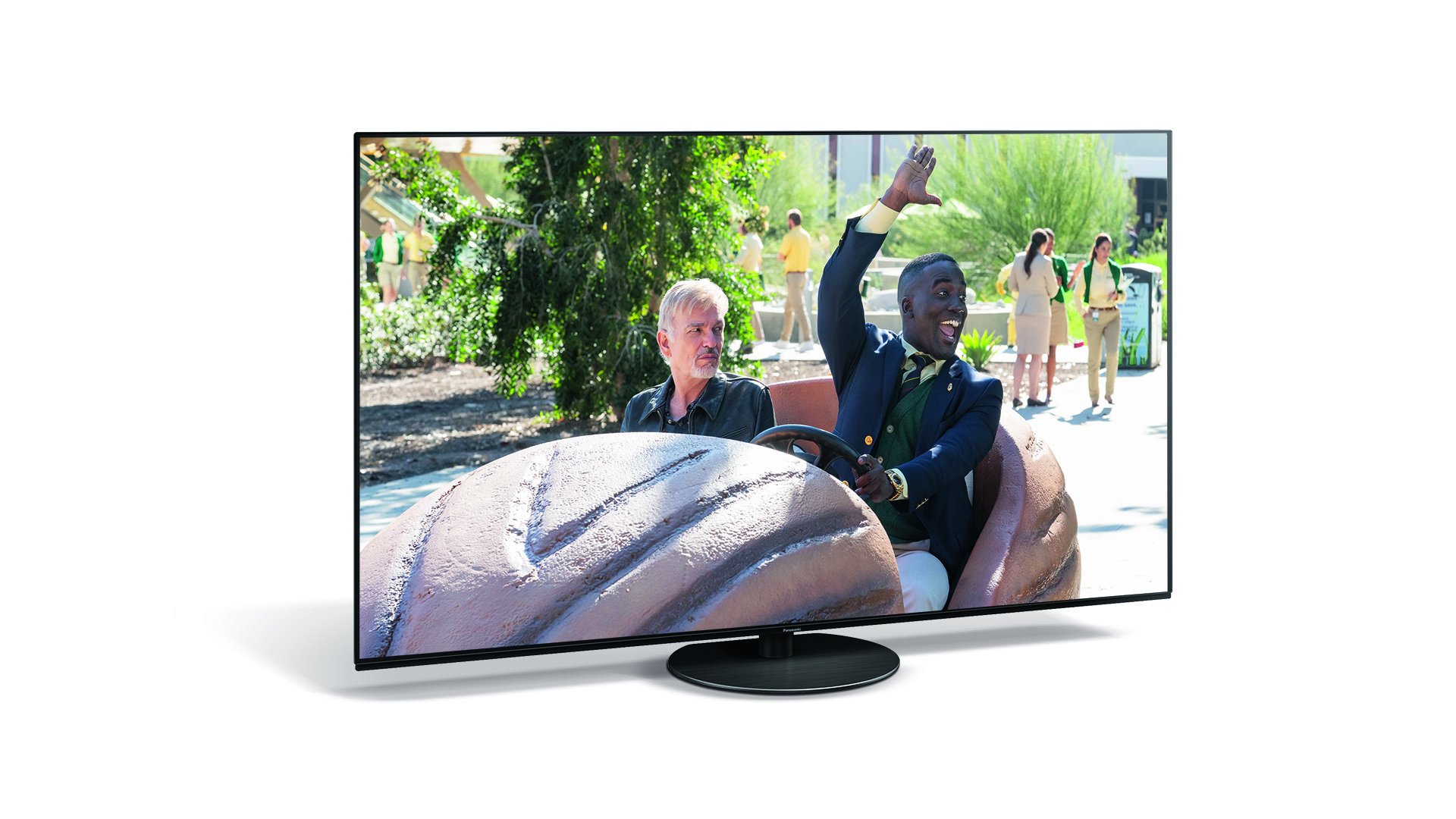
Screen type OLED
Resolution 4K
Operating system My Home Screen 5.0
HDR formats HDR10, HLG, Dolby Vision, HDR10+
HDMI 4
USB 2
Optical 1
As well as Dolby Vision, Panasonic continues to support HDR10+, HLG and standard HDR10. Even now, years after its inception, the value of HDR10+ remains dubious, but it’s nice to have the bases for both it and Dolby Vision covered - they’re not if you buy an LG, Sony or Samsung TV.
Panasonic’s app selection isn’t quite as comprehensive, but the major services are on board. You get Netflix with full Dolby Vision and Atmos support, and Amazon Prime Video with HDR10+ and Atmos. BBC iPlayer, ITV Hub, All 4 and My5 are present and correct, all wrapped-up in the Freeview Play package, and Plex is there if you’ve got a hard drive full of video files that you want to access across your network.
Apple TV and Google Play Movies & TV are both missing, though, so you’re pretty much reliant on the unsatisfying Rakuten app for pay-as-you-go movie streaming, and the only music streaming app included is Deezer.
Panasonic is also a bit behind the times when it comes to the HZ1000’s physical connections. The overall complement is perfectly satisfactory - four HDMIs, two USBs, headphone and optical outputs, and satellite and aerial sockets - but the HDMIs are a little behind the times.
While full HDMI 2.1 certification is still disappointingly rare, HDMI 2.1 features are becoming increasingly common nonetheless and the Panasonic offers fewer than many rivals. eARC (Enhanced Audio Return Channel) and ALLM (Auto Low Latency Mode) are on board, but HFR (High Frame Rate) and VRR (Variable Refresh Rate) are not. The lack of VRR will be particularly disappointing to those gamers planning to upgrade to PS5 or Xbox Series X, although the HZ1000 is an otherwise good gaming monitor, with a respectable input lag of around 22ms.
While Panasonic does now have a new-style remote in its arsenal, the HZ1000 comes with the old model, which is a real disappointment given the premium price being charged for the TV. This old remote is very basic, rather cluttered, and has very spongy buttons. It gets the job done, but it isn’t really befitting of a TV at this end of the market.
Panasonic’s TV operating system is an odd beast, too, with the front end being very unflashy but almost ridiculously simple, and the settings menus seeming somewhat overcomplicated. Perhaps that’s the point: those who wish to dabble have lots of options, while those who don’t get a very straightforward user experience.
Picture
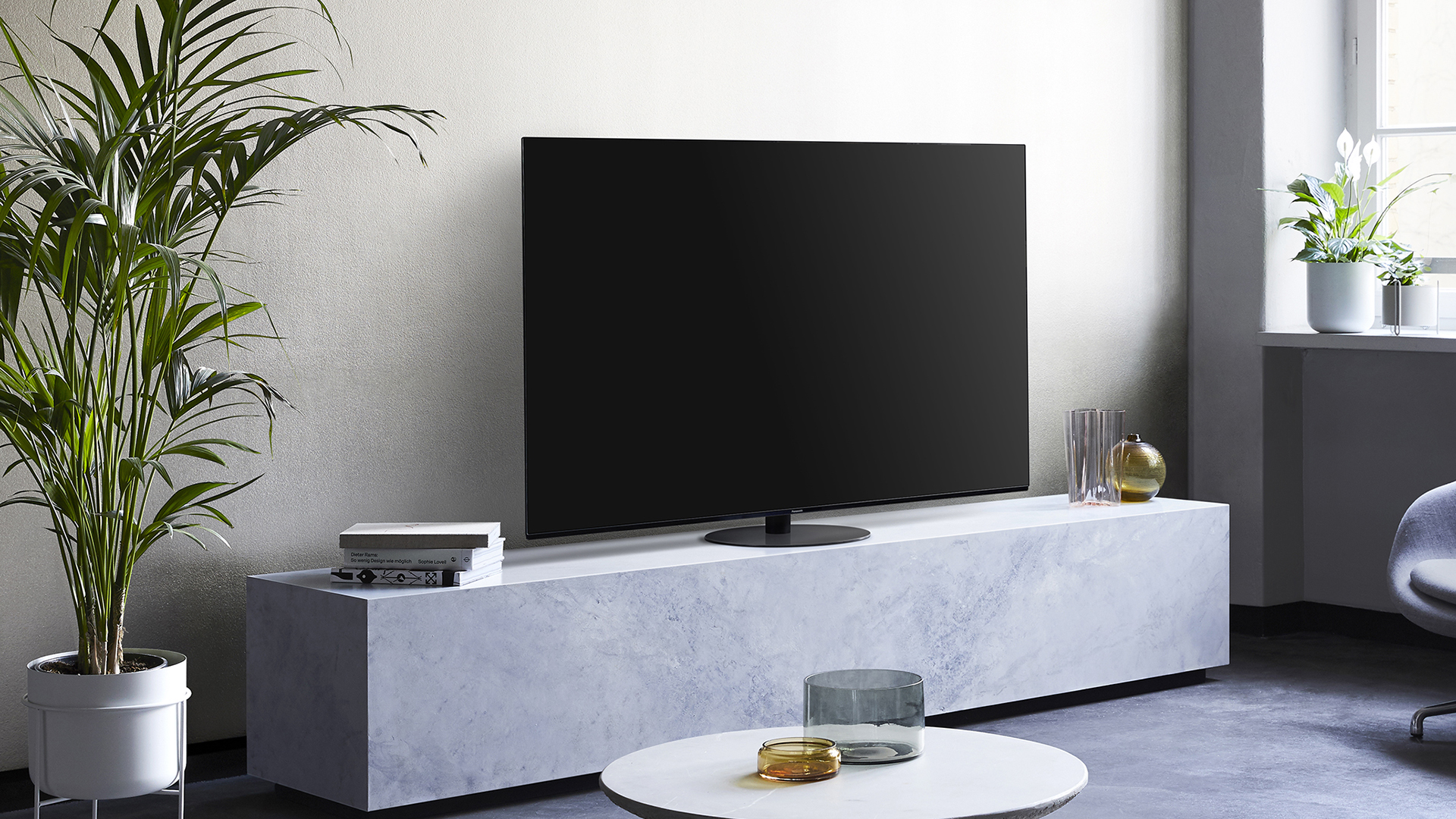
We’re actually rather disappointed with the Panasonic’s Dolby Vision performance. The dedicated Dolby Vision IQ preset skews rather dull and dark, and lacks shadow detail even when viewed in a near pitch black room. And while most TVs have a Dolby Vision Bright setting that takes the prescribed values for Dolby Vision and brightens the image slightly for more typical home viewing, the HZ1000 instead has a Dolby Vision Vivid preset that is, well, horrible, and nothing like how we expect Dolby Vision to look.
One solution is essentially to copy the settings from the Dolby Vision IQ preset to Dolby Vision Vivid but leave the Ambient Sensor switched off, but this still results in a picture that’s rather overblown in terms of brightness and colours. Besides, this level of tweaking simply shouldn’t be necessary with Dolby Vision content. It should simply look correct. By that reasoning, it’s the Dolby Vision IQ setting that works best, but it provides a delivery that’s undeniably duller and softer than that offered by most rivals in its class, the Philips 55OLED805 most notably. The dedicated Netflix Calibrated mode is no better.
Thankfully, a switch to the HDR10 4K Blu-ray of Blade Runner 2049 reveals the full glory of the HZ1000 - and glorious it is. Somewhat ironically, very little adjustment is necessary here. We find that the default Normal preset gives us the best baseline, and then tweak it by adding around 10 points to Sharpness, turning off HDR Auto Brightness and the noise reduction options, and switching Colour Temperature to Cool1. The resulting picture is beautifully balanced, combining most of the punch of LG’s CX with most of the crisp definition and detail of the Philips OLED805.
Unlike the Philips (and Sony A8, for that matter) the Panasonic doesn’t hold back when confronted with an overwhelmingly dark scene with small patches of bright light, so when the white text appears on the black screen at the start of the film, it appears far more brightly on the Panasonic than on those rivals.
Further into the film, as K and Joi fly out of the city and towards the orphanage, the ‘Now Leaving Greater Los Angeles’ shines brilliantly brightly, and the set digs up lots of the dark detail of the scene that on most sets is lost to the general murk. The Philips delivers more drama with its bolder blacks and more definite edges, but the Panasonic trumps it in terms of outright punch and insight.
Despite the switch to the Cool1 colour temperature, there’s no lack of vibrancy to the colours. Joi’s transparent yellow jacket is actually just a touch more vivid on the Panasonic than the Philips, and her skin is remarkably similar for tone and subtlety on both. It is notable how much more effectively the Philips digs up the freckles and pores of her face, but in this regard the Panasonic does still have the beating of the LG CX.
One area that you’ll likely feel the need to make some further tweaks is the Intelligent Frame Creation motion processing. The default Max is fantastic a lot of the time, producing super-sharp, super-smooth pans and rarely looking unnatural. It’s not flawless, though. There’s quite a lot of fuzz around Sapper Morton’s hand as he withdraws it from the murky water of his protein tank, and around the wipers of K’s car as they battle against torrential rain in a later scene.
Some people will barely notice these flaws - or will willingly ignore them, arguing that the pros far outweigh the cons - but our preference is to drop Intelligent Frame Creation to Min. This obviously allows in a little bit of judder and blur at times, but motion is still sharper and smoother than is offered by most rivals, but without any fuzz, shimmer or artificiality. It’s as close to a Goldilocks motion setting as we’ve seen.
This excellent handling of motion continues as we drop down to the Full HD, non-HDR Blu-ray of The Duchess, as does the set’s general naturalism. Most of the tweaks made to the HDR Normal picture mode are carried over when watching an SDR source and, while that wouldn’t usually be ideal, they translate rather well. There’s a smidge of noise that you might want to temper by dropping Sharpness a little, and those looking to add a bit of HDR-style punch will want to test out the Dynamic Range Remaster feature, but for us the balance is more or less spot on as is. Colours are rich but realistic, detail levels are excellent, and edges are supremely sharp without ever looking exaggerated. It’s not as bright or vivid as the Philips OLED805 here, but it is more subtle and nuanced.
The HZ1000 is an excellent handler of standard-definition content, too, with even old episodes of Spaced looking clean, controlled and naturally balanced. There are very few sets that can handle low quality signals as well as this Panasonic, so if you’ve got a much-loved library of regularly watched DVDs, it should go right to the top of your TV shortlist.
Sound

The HZ1000 has a fairly basic, 30W speaker system (the more premium HZ1500 and HZ2000 offer much more advanced speakers) but it sounds very clear and direct and is particularly good at projecting dialogue. There’s a crisp lightness to the delivery and a surprising degree of low level dynamic subtlety that’s especially good at conveying the emotion in a voice.
That said, it’s lacking the weight, scale and spaciousness of the best in class, and it also sounds a little harsh when pushed to high volumes. In short, the sound is better suited to everyday TV than movie night, and we recommend that anyone buying the HZ1000 also budgets for a dedicated sound system. The Sonos Beam would be a good starting point, but a complete home cinema setup would obviously be better still.
Verdict
The Panasonic TX-55HZ1000B is an absolutely brilliant TV. It’s just so balanced in its delivery: punchy but natural, sharp but not exaggerated, vibrant but controlled. It makes the most of 4K HDR but it also does a superb job with lower resolution, SDR content. Its motion handling is fantastic, too.
It’s a shame that none of the Dolby Vision presets feels quite right, and we would have liked to have seen some more advanced HDMI features. The supplied remote really isn’t befitting a TV of this quality, either.
Those are fairly minor flaws, though. A slightly bigger one is that the HZ1000 is currently more expensive than all of its obvious rivals, and those TVs are all excellent, too - better than the Panasonic in some ways.
Still, this is undeniably one of the very best TVs you can currently buy. If you’re in the market for a premium OLED, you really have to check it out.
SCORES
- Picture 5
- Sound 4
- Features 4
Read our LG OLED55CX review
Read our Sony KD-55A8 review
Read our Philips 55OLED805 review
What Hi-Fi?, founded in 1976, is the world's leading independent guide to buying and owning hi-fi and home entertainment products. Our comprehensive tests help you buy the very best for your money, with our advice sections giving you step-by-step information on how to get even more from your music and movies. Everything is tested by our dedicated team of in-house reviewers in our custom-built test rooms in London, Reading and Bath. Our coveted five-star rating and Awards are recognised all over the world as the ultimate seal of approval, so you can buy with absolute confidence.

